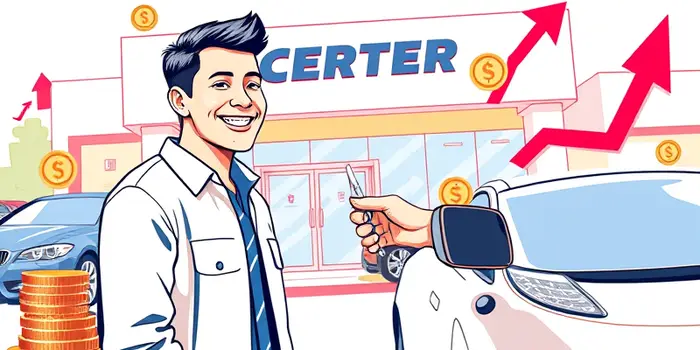
Securing an auto loan can feel overwhelming when interest rates climb and sticker prices surge. Yet with knowledge, strategy, and confidence, you can transform the process from daunting to empowering. This guide dives deep into current trends, key factors, and expert tactics to help you drive away with the best deal possible.
Auto loan rates and amounts have steadily shifted over the past year. In early 2024, four-year used car loans peaked at 8.58%, while the lowest rate for the same term fell to 7.41%. By June 2025, new car loans averaged around 7.22%–7.24%, with four-year used loans near 7.75%.
Experian’s Q1 2025 data shows average APRs at 6.73% for new cars and 11.87% for used models. Borrowers with top-tier credit now enjoy rates as low as 5.18% on new vehicles, while those in deeper subprime categories may pay up to 21.58% for used cars.
Meanwhile, the typical loan amount has grown. New car buyers borrowed an average of $41,720, making monthly payments near $745. Used car buyers took on $26,144 average loans with $521 monthly payments. Lease payments hovered around $595. These figures contribute to the $1.642 trillion total auto debt in the U.S., representing 9% of all consumer obligations.
Each factor interacts to shape your APR and total cost. Borrowers with higher credit scores qualify for lock in a low rate offers, while those with limited history or lower scores may need larger down payments or shorter terms.
Auto loan offers vary widely across institutions. Comparison is essential.
Submitting multiple applications within a 14-day window lets you engage in comparison shopping within a short window without significant credit damage. Always request pre-approval to strengthen negotiating power at the dealership.
By focusing on these actions, you can reduce interest costs and avoid exceptionally long loan terms that often lead to negative equity and financial stress.
Several macroeconomic forces will continue shaping auto financing. Tariffs and supply constraints have pushed new vehicle prices up 0.4% year-over-year, while used cars rose 1.8%. Expect affordability pressures to persist as manufacturers navigate inventory challenges.
However, a slight easing in credit tightness—down 1.8% year-over-year as of January 2025—suggests lenders are broadening access. Meanwhile, fierce competition among credit unions, banks, and online platforms is driving innovation in loan products and digital tools.
Stay proactive by monitoring rate forecasts, promotional financing offers, and emerging services like short-term loans and microlenders. This vigilance enables you to capitalize on opportunities and stay informed on market trends that affect your future refinancing options.
What credit score do I need to qualify for the best rates?
A score above 780 typically unlocks superprime APRs near 5% on new cars.
Is it worth getting pre-approved before visiting a dealership?
Absolutely. Pre-approval gives you bargaining power and prevents surprise rate hikes.
Should I finance a used car or a new model?
New vehicles often have lower APRs but higher loan amounts. Balance rate savings against monthly payment impact.
Can I refinance my auto loan later?
Yes. When your credit profile improves or rates fall, refinancing can cut total interest costs significantly.
Securing the best auto loan in mid-2025 requires preparation, research, and strategic action. By comparison shopping within a short window, obtaining pre-approval, and understanding market dynamics, you empower yourself to negotiate confidently and minimize costs.
Whether you’re eyeing a brand-new sedan or a reliable used SUV, armed with these insights you can navigate the lending landscape, seize favorable terms, and truly drive away with the best deal.
References













